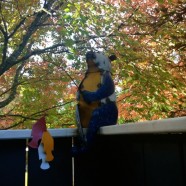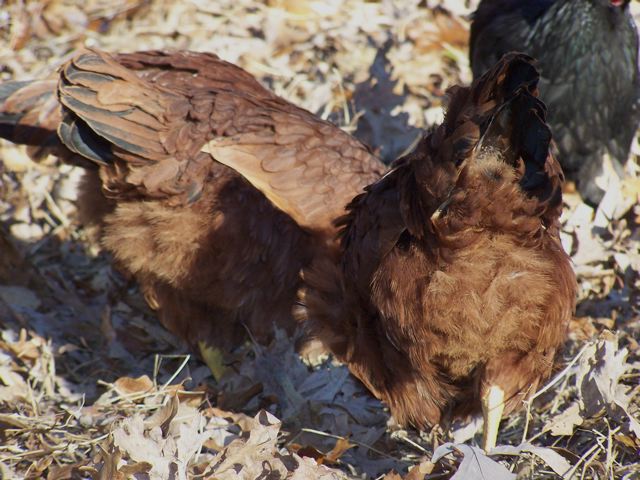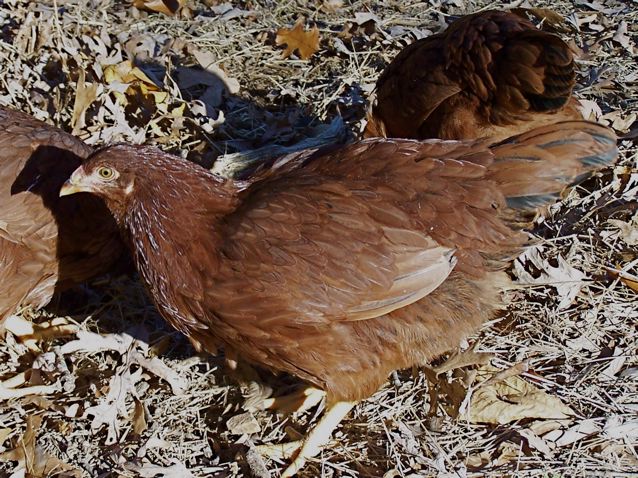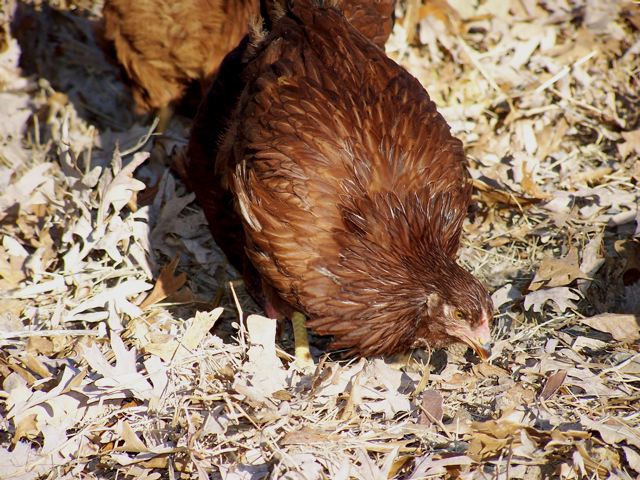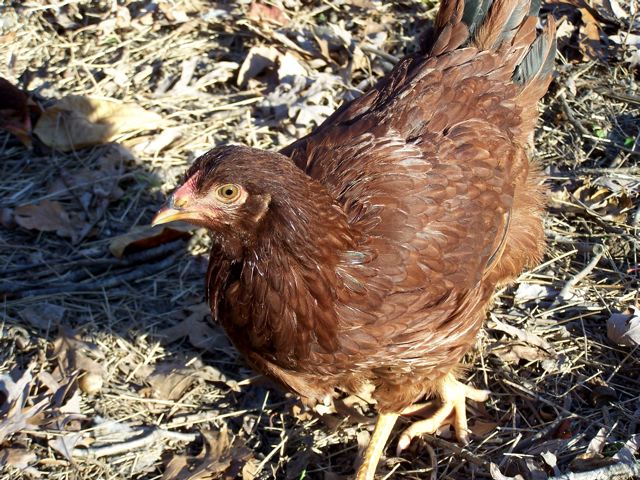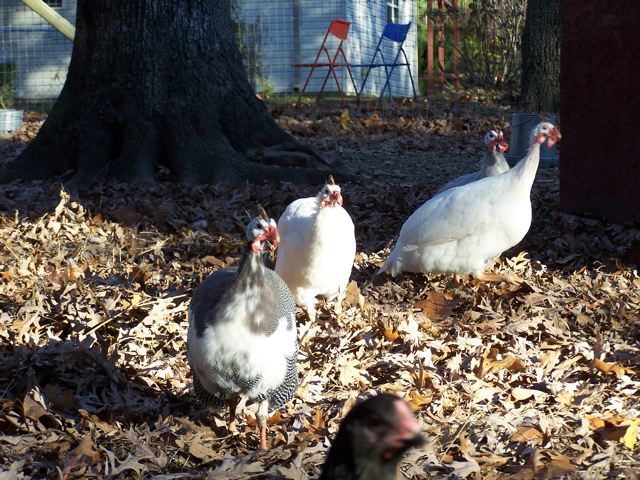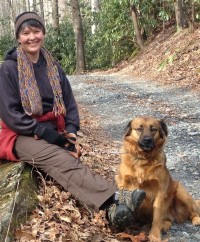First Frost
This past weekend brought the first frost to the farm. The first night the forecast was for 30 degrees and they hit it bullseye. Forecasts are tricky here in the mountains where temps can vary depending on which mountain or valley is yours and where you are situated on the slope.
Read MoreSigns of Fall & Missing Cover Crops
Fall is peeking out from behind the green leaves. Long before the oranges and reds take over, colors begin to shift from the velvet and verdant greens to summer to a shinier, more silver hue in the newly angled light. Yellow plumes of golden rod wave along the roadsides, fooling people into believing that is what is making them sneeze this time of year, but it’s not.
Read MoreThe Gardener’s Dilemma: To plant or not to plant.
Santa Fe Honey
I remember standing at a farmers market in Santa Fe New Mexico in front of a table lined with jars of amber and gold honey. I was surprised at how much honey the high-desert produces, given the dry scrub covering so much the hilly terrain. The bearded beekeeper in a cowboy hat explained how nearly all of what I saw as “scrub” bloomed, and the bees flourished. He was sharing samples and the tastes were spectacular.
Like the honeys in any region, the different waves of flowers throughout the seasons created different tastes, bouquets, high and low notes, like wines. “But the very favorite honey of my customers, hands down, is autumn clematis honey.” He shook his head slightly, “You can just open the jar and you smell flowers.” He closed his eyes as he said this, as if he was inhaling the scent just now. Before I had time to speak a single word he answered my next question, “I just get it in the fall and I sell out right away, so I can’t offer you any. But people are asking me if I have any the rest of the year.” That was 2010 and I’d never even contemplated keeping bees.
Sweet Autumn Clematis blooms in September and October across the Ozarks and as I drive through town I spot the big green mounds of vines on fences covered up with so small frilly flowers it looks like a blanket of white foam. It is a weedy green vine unremarkable for most of the season. Come autumn, it explodes into a starry blanket of creamy blossoms with a delicious scent. I think back to the Santa Fe honey. That trip was in 2010, before I ever contemplated keeping bees.
These days I look for good things to plant for my bees. I looked up Autumn Clematis only to find that is not native to the US can be invasive/opportunistic in some climates and I’m not really sure if it is a problem in the Ozarks. But then there’s Virgin’s Bower (Clematis virginiana) also called woodbine, which is less showy but native. The native variety has an added bonus of being good for songbird food and nesting materials, though I’ll have to find a special spot to plant it given that it loves a moist setting…. But this is all part of the pleasant mental wrangling gardeners engage in for fun when it’s too cold or wet to dig.
But the thought of new plantings immediately runs into another, one that says I may not be here to see it. By the time it blooms I may be breaking new ground yet again on the home we hope to find when we move back to the Blue Ridge Mountains in the next year.
Ahhh, the gardener’s quandary: If you know you are going to be in a place a relatively short time, do you bother to plant things you will likely never get to see fully grown, or bearing fruits or flowers or shade?
I once read a story about a Quaker gardener, a woman, who lived in a town about to be invaded by German troops in World War II. At least that’s the way I remember the story began. Just before she left her home to escape to a neighboring country, she was planting seeds in her vegetable garden. I don’t remember what. Neighbors thought she was crazy to be planting just before leaving and said, ‘You won’t be here to eat it!’ Her answer something like ‘Whoever lives in this house next, they will need to eat.’
Oh those beautiful Quakers. This story has stuck with me for decades, the compassion of this woman willing to plant food she would never eat. Another way I’ve heard this belief is that ‘true wisdom lies in planting trees even if you will never live long enough to sit in their shade.’ It’s very hard to remember to lift up my attention from my wants, wishes and worries and to think of this land going on into the future without me. But when I do, it feels right. And oddly, I feel better—lighter—about how long I will be here. As a hospice nurse, I can’t help but note the larger echo of that realization.
So let me plant more stuff I may or may not be here to see bloom. If only for the reason that when the wash of white frilly flowers appears in some future autumn, bees will arrive at each bloom. There will be nectar for them.
Are there any quotes or stories that inspire your gardening? I’d love to hear them if you leave a comment (look above or below this post for the “comments” link – the position varies depending on how you are reading this). Also, if anyone knows the source of the Quaker gardener story, I would love to find it again. Special thanks to www.beautifulwildlifegarden.com for some of my favorite online reading. —A Larrapin Garden. Where posts may be boom or bust depending on the season. If you subscribe here you’ll get one weekly email with selected posts. You are also invited to get related miscellany wherever you like to ramble online: Facebook [brand new page…needs your “like”] | Twitter |Pinterest | Instagram. Read MoreFirst Frost at Larrapin. And Basil.
The mound of basil spread on a magenta towel on top of the washing-machine is starting to wilt. Last night leaves stood up from the stems, crisp and fleshy at the same time, like a cat’s ear. This morning it is a soft, pungent pile. I pick up the bundle and turn the whole thing over, fluffing the leaves apart. A cloud of verdant scent rises as if summer exhaled. My hands now carry the spicy odor, even typing this later, sharp and earthy at the same time. The leaves need to lose a little more water to the room air before I put them in the herb dehydrator. Otherwise it will take days to dry completely—as it must be to get crumbled and funneled into the bottle labeled Basil.
October 7th, last night, was first frost. Just more odd timing in a year filled with weather oddities here in the Ozarks. Halloween has been a more common frost date in the seven winters I’ve lived here. But this is the year no winter to amount to anything ever came in late 2011. I kept thinking the cold would catch us off-guard the following spring. But it never bothered. The figs that usually freeze to the ground and must regrow from there had green buds high on living branches in early April. Peach blossoms so often nipped by late frosts were untouched and lit up the branches like pink birthday candles. Those same branches would be stressed by severe drought a few short months later. The new queen of weather is bipolar compared to the more reliable ruler she overthrew. A coup d’état by carbon apparently.
The winter we missed last year acts in a hurry to catch up. At least for a night. The surprise low of 27 predicted only reached 32 at our house, set on a slope in the “sun bowl” as we call it. But 32 is more than enough to brown or blacken basil. So last night had me once again gardening by headlamp. I located and cut the huge basil plants I’d put in late that had not flowered yet. This means peak flavor. Today I will pluck the leaves off the stems and arrange them like puzzle pieces on the racks of the dehydrator. Then set the thermostat only at 95 so the most scent and color will be retained. Though it will take them two or three days at least to get fully dry this way, it’s the only way to keep the full flavor. I want the taste of this basil to be strong enough to cut through a winter day. I want the scent sharp as a green blade, smelling as if it were plucked right from the perfumed hands of Summer herself.
—A Larrapin Garden, where the basket of basil picture shown at the top was—full disclosure—actually the September batch I used to make a winter’s worth of pesto. I *love* basil so I grow a lot, as you can see and read. It takes at least half as much as you see in the picture, after drying and milling, to fill a full-sized container for the spice cabinet. Lotta summer in that little bottle! Like Larrapin Blog? Please subscribe to get blog posts in one weekly email. You can also get bonus links, giveaways and recipes by “liking” the Facebook page or following on Twitter. Thanks! Leigh
Read MoreBetter Buckeye Update- 12 weeks
I wasn’t happy with the photos of the Buckeyes I posted yesterday. I’ve been jumping back and forth between doing the blog photos at Flickr, uploading to Blogger directly (hence the small photos yesterday – that is my least favorite method…) and using the Picasa web albums now that there is a new Mac uploader. The last method seems to be working well. The photo size options are not the best – either the tiny 400px like yesterday, or the giant 800px below. (I prefer a nice 600px) But’s it’s fairly speedy and easy, so we’ll go with BIG photos!
So I went out to get some photos of the girls again at 12 weeks old. Tossed out some oats for them to snack on to keep the group close to the camera. Otherwise, they will come briefly to check out what you are doing, then most will wander away, while the handful of particularly chummy birds will stand so close that it’s hard to walk around without stepping on anybody.
Above is a group shot, mostly Buckeyes with a few Black Australorps thrown in. If you missed the post on why Buckeye chickens are pretty special, you can read about Buckeyes at the American Livestock Breeds Conservancy page here. You have to be careful though, on that website, or else you’ll find yourself with a new hobby of preserving heritage livestock like I did. It could be worse, I could have picked cows or horses to work with! (I wish I had that much land!) Anyway, it’s a great organization to join and their newsletters are really interesting.
But back to the Larrapin Buckeyes. Note the chicken bloomer shot above. Since I had tossed out oats, it became difficult to get any pics that included their heads, since they were VERY busy looking for those oats in the leaves. This is my sneaky way of making my chickens work for a living. All leaves get raked into the chicken pen, all scratch grains get tossed on the leaves. And presto, a month later the leaves are reduced to a finely ground leaf mold that is exquisite for a compost base or for mulching garden beds! This method words even faster if your chickens are in a smaller coop – you can pile in the leaves and they will work on them all day, every day!
Above is a good representative photo of the pullets at 3 months old. They have huge feet! If chicken are like puppies, these should grow up to be big girls!
Buckeye’s have lovely feathering, even if their coloring is pretty routine. The feathers are very distinctive and textured as you see above. Another characteristic in the literature that turns out to be VERY true is their need for a lot of space. These gals love to explore and wander the whole pen – a series of three paddocks. So I can see they would not like a constrained space. They are the ultimate free rangers it seems. I do note though, they like a long afternoon nap sprawled on the hay in the sun… Smart chickens.
This is one of the personable girls, saying, Hey, got anymore oats in your pocket?? They are very curious and like sparkly things – especially my ring. I switched to oats from cracked corn for scratch since the oats are supposed to be better for egg production. (Though that will be a while for these girls…) I’ll add some corn in over the winter for heat. The Buckeye’s are bred to be fine in Ohio winters, so Arkansas winters – even in the farthest NW corner where we are, should be a cakewalk for these girls. Note the very small pea combs – that’s to avoid frostbitten wattles in cold climates.
And then the guinea hoodlums show up, run all the girls off and the photo session is over. Thanks for getting to know the Buckeyes better. For folks with the room, they are a fine chicken to preserve.
Read More



